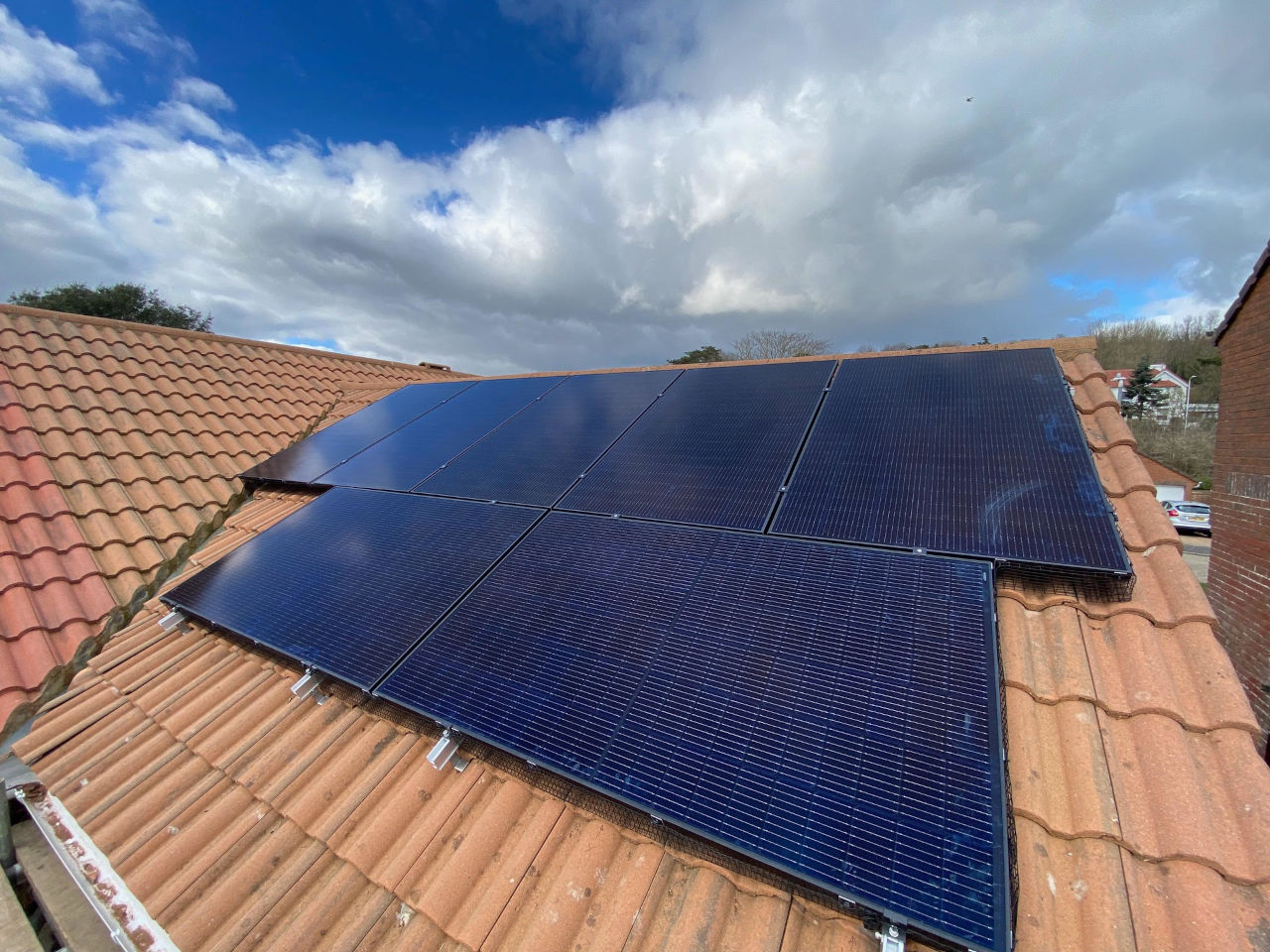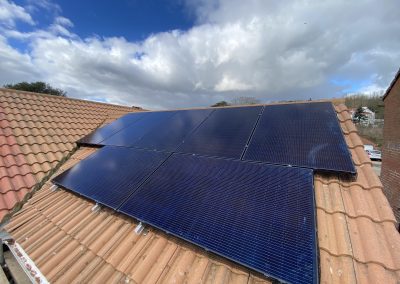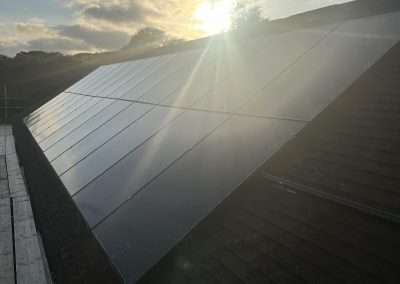Solar PV

Solar PV Systems
Solar power is currently the fastest growing source of electricity in the world. As the amount of solar installed has risen, costs have come down dramatically and solar systems are becoming affordable to more and more people.
A brief description of a system
Solar panels when exposed to sunlight produce direct current (DC) electricity.
The panels are connected together via cables into what are called “strings” before being connected to an inverter.
The inverter then converts the DC electricity to alternating current (AC) electricity which is the type used in homes and the electricity grid. The inverter is then connected to the Consumer Unit (Fuseboard) of your house, supplying the house with electricity.
Grid-tied and off-grid systems
Solar PV systems may be grid-tied or off-grid. As the name suggests, in grid-tied systems the house is still connected to the electricity grid and draws electricity from the grid when the PV system produces less electricity than the house is using. If the PV system produces more electricity than is needed by the house, then it may also feed the excess electricity back into the local grid, or charge a battery for use after the sun goes down. Whether or not it is possible to feed electricity back to the grid depends on the rules of the utility, state, or country.
Off-grid systems on the other hand are not connected to any external grid, and must supply all of the power required by the house that it is connected to. In order to continue to supply electricity at night or during cloudy periods, these systems include batteries to store the electricity generated by the panels. They also require a charge controller, like a hybrid inverter which will control the charging of the batteries.
Solar systems are sized based on the electricity usage of the house, the amount of available roof space, the orientation of the roof (is it south, east or west facing?) whether power can or should be exported to the grid, and many other factors.
First it is necessary to determine the expected electricity usage of your home. Either through past electricity bills, or by adding up all your electrical devices and estimating how long you use each one
The next step is to calculate the size of solar PV system which matches your electricity demands, while also considering what will provide you with the best return on your investment. How this is done will depend on the type of system you have:
Components of a Solar PV System
Solar Panels
Solar Panels (sometimes called solar modules) are made up of a number of smaller silicon solar cells that convert sunlight into electricity.
These are typically protected between a glass front sheet, and a polymer back sheet, with everything being held together by an aluminum frame. They usually come pre-assembled with cables so that they can easily be connected together and to an inverter.
Solar panels come in a variety of different technology types, colors, and sizes. Different solar panel types have varying efficiencies, which changes the amount of power that can be generated by a given area of rooftop.
Inverters
The inverter is the device (or devices) in the system that converts the DC electricity produced by the solar panels into the AC electricity that is used within your home. There are three main inverter technologies to choose from, string inverters, string inverters plus DC-to-DC optimizers, and micro-inverters. While string inverters are currently the most common option, the use of micro-inverters and DC optimizers continues to increase as costs go down.
String Inverters
When string inverters are used solar panels are connected in series into strings, and multiple strings are connected in parallel to each inverter, which is called an array.
String inverters tend to be the cheapest option as there is only one device to install for many solar panels, they are also typically more efficient at converting from DC to AC electricity. One problem with string inverters however is that when one solar panel in a string is shaded or has its output lowered by soiling from leaves, dirt or bird lime, all the other Solar panels in the string are also affected.
Hybrid Inverters
A hybrid solar power inverter system are used when the PV system is to be used with a battery backup system. The hybrid inverter can convert energy from the array and the battery system or the grid so that energy becomes available to be used within the home.
They can draw energy from the grid when grid energy is cheapest and use stored energy when grid energy is most expensive. They will use power directly from the array and convert it from DC to AC when the array is producing electricity and when the battery storage system is full.
It is ideal for PV array designs where further expansion is likely or when a battery storage system may be added at a later date.
DC-to-DC Optimizers
DC-to-DC optimizers are used to solve the issue of shading on one solar panel affecting all modules in a string. They are smaller devices that connect to just one or two panels and optimize the output of each panel or panels individually. As they still output DC electricity they still need to be connected to a string inverter to convert to AC electricity.
Since they optimize output at a module level, DC-to-DC optimizers can increase the total output of a solar system, especially one that is subject to a lot of shading or soiling. The downside is that they increase the system cost compared to using string inverters alone.
Micro-inverters
Micro-inverters are similar to DC-to-DC converters in optimizing the output of the solar panels individually. The difference being they also perform the DC to AC conversion so that no string inverter is required at all. Micro-inverters are mounted close to the solar panel. Using micro-inverters can greatly reduce the complexity of the system, however, due to their higher price, will result in a higher price for the system overall.
Inverter functions
As well as converting the DC electricity from the sun into AC electricity, the inverter also
- Optimizing the power output of the solar panels.
- Controlling battery charging if a battery is installed.
- Safety functions such as disconnecting from the grid in case of an power outage.
Including batteries in a solar PV system allows the energy produced by the solar panels to be stored for use after the sun goes down and enables you to get the maximum benefit for your Solar PV system reducing electricity bills further.



